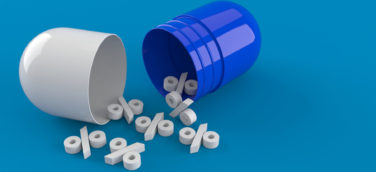“Think differently.” A simple phrase that is often thrown around as the solution to some difficult problems. Your product isn’t selling—think differently. You can no longer get face time with your customers—think differently. The industry is completely changing as we know it—think differently. But how do you actually think differently? One method: “Design Thinking.”
Design Thinking is not a new concept. In fact, its origins can be traced to Herbert A. Simon’s 1969 book The Sciences of the Artificial, and a course has been taught on the subject at Stanford University since the 1980s. At its core, Design Thinking is simply another method used to identify all parameters of a problem in order to create potential solutions. But at a time when companies in almost any industry are striving for innovative answers, it is once again becoming a popular method to help transform a business. The healthcare industry is no exception.
“In healthcare today there is so much change with reform, the aging population, new regulations and technologies, and the fact that patients are taking charge more,” explains Diane Hunt, VP of Marketing, the Americas at Konica Minolta, a medical imaging company. “By taking a Design Thinking approach, we discovered a lot that probably wouldn’t have been on our radar before.”
The key, according to Hunt, has been listening to customers. It’s not that Konica Minolta wasn’t listening before—Hunt says the company has always been customer centric—but in holding Design Thinking workshops, the company enhanced its understanding of its customers’ challenges by creating a more collaborative environment in which the customer felt included in the company’s decision-making.
That is why Shawn Nason, who helped lead Konica Minolta through Design Thinking workshops while the Chief Innovation Officer at Xavier University, thinks Design Thinking is a limited term. Instead, he believes companies should consider co-creation and human-centered design approaches to stimulate innovation.
“Design Thinking is only a part of a much bigger process in this co-creation and human-centered design aspect,” offers Nason who recently left Xavier to found his own company, The Nason Group, which specializes in helping companies become more innovative. “It’s really about putting the consumer in the middle of your process, of your product, or of your solution. Co-creating means bringing the consumer in and using an open innovation process. So you may use other companies, competitors, aligning organizations or you may look at industries outside of your own to bring this process about.”
Where Does a Company’s Co-Creation Process Begin?
Nason explains that there is no one set way to do this, so every company will need to take a different approach depending on their needs. But a good starting point: Define what your needs are, and make sure you are actually defining the right problem. Nason says a company’s problem may not be the same as their customers’, or whoever the end user may be, so they must make sure they are on the same page.
For example, Konica Minolta is a medical imaging company, but medical imaging is complex and involves various aspects. “Primary Imaging” is the initial procedure in which actual medical imaging diagnostic hardware, such as X-ray and ultrasound, are used. But clinicians also need access to healthcare IT systems that make the viewing and sharing of the imaging possible. Together, these technologies are known as “Primary Imaging Solutions.” However, the concept of calling this process “primary imaging” is fairly new, so Konica Minolta had to make sure their customers actually understood what that meant.
That is why Nason suggested Konica Minolta start by creating a process map. This map defined what the company thought primary imaging meant. They then showed this map to a group of healthcare stakeholders who were brought in to participate in design thinking workshops at Xavier University’s Center for Innovation’s Healthovate! Activate! Summit. The group consisted of 40 industry leaders from across the healthcare ecosystem including hospital systems, providers, resellers, radiologists, students, educators and ideation thinkers. Hunt stresses the importance of having a broad audience as it ultimately opens up the discussion to more ideas.
The discussion process began by going over the map to see how it compared to the participants’ perceptions of primary imaging. Then the group went through some ideation stages including filling out their own maps, watching video scenarios of other people’s problems, and discussing some key questions such as: What are challenges that keep you up at night when it comes to primary imaging? What is your wish list when it comes to primary imaging? Do you even understand what primary imaging is?
The group also broke into smaller groups and participated in activities such as crowdsourcing. This involved participants anonymously writing down ideas on paper then passing the ideas around four or five times so each member of the group could rate each idea. Each smaller group would then take the idea that rated the highest within their group and build it out further to try to imagine what primary imaging could look like in the future.
But that is only one example of how a company can take a human-centered design approach. Other examples Nason mentioned included journey mapping, in which you map out the experience of the consumer and their pain points; observing consumers in their home and/or workplace; and qualitative interviewing with the end user.
Companies also don’t have to be limited in how or where they apply these approaches. After a successful experience at the Healthovate! Activate! Summit, which garnered several new insights (more on that later), Konica Minolta decided to take the new tools and activities they learned on the road.
Applying Human-Centered Design in a Conference Setting
Konica Minolta decided to try something new when they recently attended the annual conference of the Radiological Society of North America (RSNA). Instead of the standard booth, the company wanted to try some of the Design Thinking activities they picked up at the Healthovate! Activate! Summit. When people came up to the booth, a video from the recent workshop immediately caught their attention. They were then handed the same map used during the Summit. Hunt says that the booth staffers would spend anywhere from 10 to 30 minutes with each attendee to go over the map and their ideas about primary imaging.
“It truly differentiated us as a company and positioned us more as a trusted advisor versus a box product provider,” Hunt adds. “It was an overwhelming response with many requesting to take a copy of the map back to C-level administrators at their hospital and share it with others at their institution. In most cases, we didn’t even need someone standing there engaging them. The tool was there and they just lit up.”
Hunt says that Konica Minolta plans to hold future workshops as the process is both delivering unique insights and changing the perception of the company, which may ultimately help the sales team.
“This process actually serves as an aid for our salespeople by allowing them to approach customers differently, and take a more advisory role,” Hunt explains. “So now we are not just selling to customers but creating solutions aligned with their needs, and truly living our brand as a ‘customer-centric’ company. I saw this first hand at RSNA, as the sales organization started to utilize this as a tool—they found it much easier to approach customers.”
Design Thinking Results in Fresh Ideas
Once again, we come back to the question of how to think differently. By taking this new approach Konica Minolta not only engaged with their customers in a new—and positive way—but they also learned a lot about what they should be doing.
The company released a list of the top 10 things learned during the Xavier workshops, which included the need for more empathy when dealing with patients, the desire for imaging systems to be cloud-based and why Millennials might require a different care program—and what that could look like. The workshops spurred some new business ideas that the company would never have thought of.
For instance, the company has always been focused on hospital and clinic settings. They never considered bringing their solutions into the retail environment. Now they are imagining what it could be like if a customer could just go into a CVS store and have the clinician take a quick look with a handheld ultrasound. According to Hunt, 30% to 40% of diagnoses are missed—ultrasound could offer a quick alternative that would allow more patients to get a scan to see if they have any additional needs.
Another idea brought up: A way to make the information in the image more accessible to patients by providing some kind of device or additional image that actually explains what they are seeing. Physicians were also interested in something that would alert them if a problem came up on one of their patient’s panels so they could be more proactive rather than reactive. Others wanted to see an expanded reach in the telehealth area.
“Ultimately, a lot of the suggestions really helped me, as a marketer, understand the need for reaching out more to the patient, their use of healthcare and how they are more proactive in managing their healthcare,” Hunt adds. “Overall, I think it’s been very successful for us and it will continue to be a differentiator and a tool for our sales organization.”
This human-centered design approach is one that Nason feels could work for other life science organizations as well. And while he understands this is a highly regulated industry, he believes that the regulatory environment is not what hinders innovation.
“Culture is what makes innovations difficult,” Nason explains. “Yes, the healthcare industry has regulations. Yes, CMS puts a lot of stuff out there. But companies just don’t take the time to learn enough about their customers. The culture of healthcare in the U.S. was not built on a consumer-friendly model. It was very inward-focused.”
Nason started his career at Disney, a company he says, “understands how to know and delight their consumer.” In fact, according to Nason, before they moved forward on any project, they made sure they knew who the guest was for the particular project, how to delight the guest, how to meet the guest’s expectations, and what the guest wanted. He tries to instill that mindset in companies looking for help to become more innovative. But that requires a certain commitment.
“It’s really an investment of time, resources and money,” Nason adds. “Innovation is not always easy. Stopping a process to make sure you know your customer really well before you start requires time and money. That’s very hard for people to understand. But what I’ve learned: If you invest in that on the front end it will save you a lot of money on the back end.”








